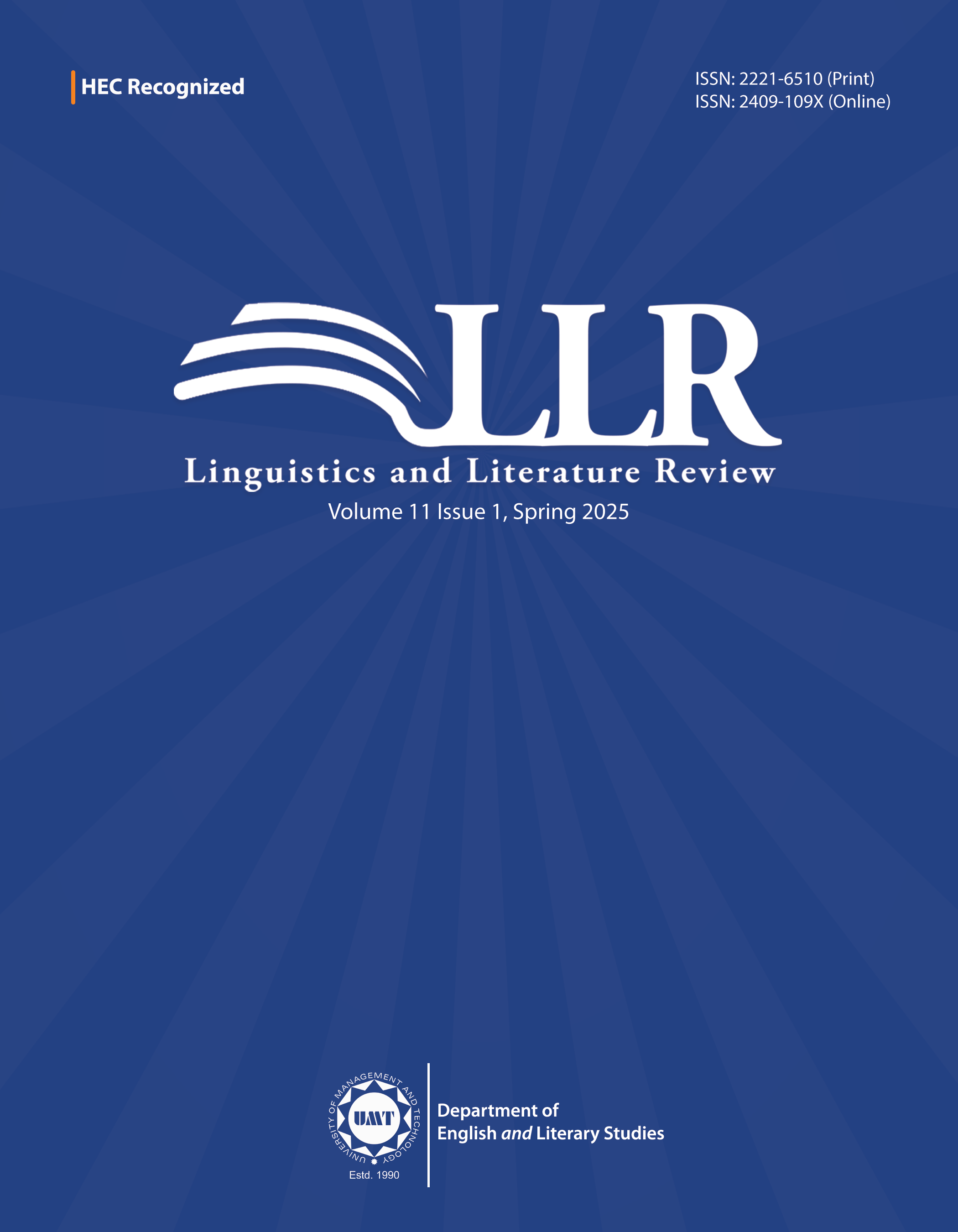Romanticizing the Monster: A Postmodern Study of L.J. Smith’s The Vampire Diaries
Abstract
 Abstract Views: 0
Abstract Views: 0
This research explores the influence and impact of postmodernism on the transformation of monstrous archetypes in contemporary literature by focusing on L.J. Smith’s The Vampire Diaries. The study primarily examines the romanticization and humanization of vampires and how monsters in the postmodern age no longer serve as evil antagonists. In the present research, a qualitative and explorative research design is used through a postmodern lens to argue that the concept of monstrosity embraces subjectivity and ambiguity in the modern world. Jean Francois Lyotard's description of the postmodern condition as a sense of skepticism toward dominant metanarratives is central to this shift, as it challenges classical binaries and dismantles rigid societal norms. This disposition of fluidity and relativity of meaning is exemplified in The Vampire Diaries through the portrayal of vampires as normal human beings as Smith strikes a delicate balance between their gruesome nature and the complexity of their character. The research draws on the concepts of identity, power, and morality to argue that these notions are subjective and even creatures like vampires are capable of love and care. This cultural shift suggests society's increasing embrace of diversity and complex interpretations of identity in the postmodern age. L.J. Smith’s work demonstrates how literary and cultural landscapes have evolved, resisting absolutism and celebrating multiplicity.
Downloads
References
Asma, S. T. (2020). Monsters and the moral imagination. In J. A. Weinstock (Ed.), The monster theory reader (pp. 283–292). University of Minnesota Press.
Azmi, M. N. L., Moderin, C. R., & Sidek, H. H. M. (2018). A study of humanity in Smith’s The Vampire Diaries: The Awakening. International Journal of Asian Social Science, 8(3), 155–163. https://doi.org/10.18488/journal.1.2018.83.155.163
Cohen, J. J. (1996). Monster culture (seven theses). In J. J. Cohen (Ed.), Monster theory: Reading culture (pp. 3–25). University of Minnesota Press.
Faza, M. M. (2015). Flesh and blood: Reading monstrosity and desire in the Twilight Saga and The Vampire Diaries. Monsters and the Monstrous Journal, 1–10. https://digibuo.uniovi.es/dspace/handle/10651/30941
Lampert-Weissig, L. (2018). Blood and soil in The Vampire Diaries. Aeternum: The Journal of Contemporary Gothic Studies, 5(1), 43–59. https://www.medievallit.org/course_materials/Lampert_publications/Lampert_blood_soil_vampires.pdf
Lush, R. M. (2017). Original sin: Frontier horror, gothic anxiety and colonial monsters in The Vampire Diaries. Horror Studies, 8(2), 293–312. https://doi.org/10.1386/host.8.2.293_1
Lyotard, J.-F. (1984). The postmodern condition: A report on knowledge (G. Bennington & B. Massumi, Trans.). University of Minnesota Press. (Original work published 1979).
McMahon-Coleman, K. (2016). What Elena did: Dis/ability in The Vampire Diaries. Journal of Asia-Pacific Pop Culture, 1(2), 165–180. https://doi.org/10.5325/jasiapacipopcult.1.2.0161
Mittman, A. S. (2017). Introduction: The impact of monsters and monster studies. In A. S. Mittman & P. J. Dendle (Eds.), The Ashgate research companion to monsters and the monstrous (pp. 1–14). Routledge.
Sanna, A. (2019). Family concerns in The Vampire Diaries. Gothic Studies, 21(2), 209–222. https://doi.org/10.3366/gothic.2019.0023
Smith, L. J. (2010a). The Vampire Diaries: The awakening (vol. 1). HarperCollins Publishers.
Smith, L. J. (2010b). The Vampire Diaries: The struggle (Vol. 2). HarperCollins Publishers.
Wang, Y. (2024). A study on culture-specific items in light of Skopostheorie: A case study of The Vampire Diaries. Academic Journal of Humanities & Social Sciences, 7(3), 179–187. https://doi.org/10.25236/ajhss.2024.070328
Wilson, A. W. (2024). Bonnie Bennett and the beyond: An exploration of one representation of the afterlife in The Vampire Diaries. Australasian Journal of Popular Culture, 13(1), 41–55. https://doi.org/10.1386/ajpc_00086_1
Wright, A. (2020). Monstrous strangers at the edge of the world: The monstrous races. In J. A. Weinstock (Ed.), The monster theory reader (pp. 173–187). University of Minnesota Press.
Copyright (c) 2025 Jonathan Caleb Imdad

This work is licensed under a Creative Commons Attribution 4.0 International License.

This work is licensed under a Creative Commons Attribution 4.0 International License. Authors retain copyright and grant the journal right of first publication with the work simultaneously licensed under a Creative Commons Attribution (CC-BY) 4.0 License that allows others to share the work with an acknowledgment of the work’s authorship and initial publication in this journal.







